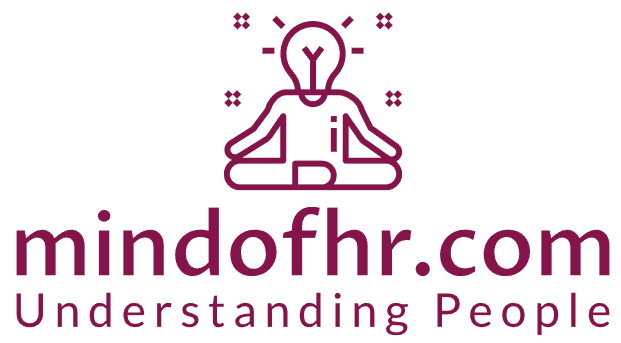Let’s face it—uncomfortable conversations are one of the few things in leadership that we all dread. Whether it’s giving feedback on subpar performance or addressing an interpersonal conflict, these moments have the potential to make us squirm in our seats. But here’s the secret I’ve discovered after years of navigating these tough talks: the most uncomfortable conversations often lead to the most powerful transformations. In fact, what if I told you there’s a way to make these conversations not just bearable, but an opportunity for growth?
I’ve had my fair share of nerve-wracking conversations, from addressing poor performance to correcting misconceptions, and I’ve learned that every single one of them can be a game-changer—if you approach it the right way. These tips I’m about to share? They’re not your typical “how to be nice” suggestions. Instead, these are approaches that shift the power dynamics and leave everyone, including the person you’re speaking with, feeling empowered.
1. Don’t Just Address the Behavior—Unpack the Belief System Behind It
Here’s a novel idea: Instead of just tackling the behavior (e.g., someone missing deadlines or giving lackluster work), try digging into the belief system behind that behavior. This isn’t just a conversation about “what’s wrong,” it’s about uncovering why they’re acting the way they are.
Let me take you back to a conversation I had with a team member who was constantly missing deadlines. The usual route would’ve been to simply point out the issue: “You’re not meeting your targets.” But instead, I flipped the script. I asked:
Me: “What does hitting a deadline mean to you? Do you feel like it’s something you’re avoiding, or is there something about the pressure that’s causing hesitation?”
The response wasn’t about laziness or incompetence. It turned out the person had a deep-seated belief that rushing projects meant sacrificing quality, and they didn’t want to compromise their standards. This insight transformed my approach—the problem wasn’t deadlines; it was their belief about how work should be done. By acknowledging their belief, we started collaborating on a solution that respected their values while meeting the business needs.
This approach isn’t just unique, it’s powerful. You’re not just addressing the action, you’re tackling the root cause, and that’s where the real change happens.
2. Flip the Script: Position Yourself as the ‘Student,’ Not the ‘Teacher’
We’ve all been trained to think that leadership is about directing people. But what if I told you that one of the most powerful ways to handle uncomfortable conversations is by flipping the dynamic? Become the student, not the teacher. Sounds counterintuitive, right? But hear me out.
I once had to have a tough conversation with a senior team member who was dragging their feet on a major project. Instead of jumping in with criticism, I approached them like this:
Me: “I’m noticing some challenges on this project, and I’d love to understand your perspective. What’s not working for you? How can we make this a smoother process?”
By positioning myself as the one looking for insight, it immediately removed the power struggle. Instead of them feeling defensive, they felt empowered to share their struggles. This built a connection, made the conversation feel more like a brainstorming session, and created a collaborative atmosphere that brought out the best ideas from both sides.
When you approach the conversation this way, you create a safe space that lets people express themselves without fearing judgment. You’re no longer the “boss” handing down decisions—you’re a partner in problem-solving.
3. Leverage Humor to Diffuse Tension—But Make It Personal
Most advice tells you to stay “professional,” but sometimes a little humor can cut through the tension like a hot knife through butter. Now, I’m not talking about making a joke that’s out of place, but rather bringing a bit of personality and relatability to the table.
I had a conversation once with a team member who had a long track record of underperforming. I could tell we were both feeling the weight of the conversation, so I decided to introduce some levity:
Me: “You know, if I had a penny for every time we’ve discussed this project, I could retire early and just manage a beach resort. But seriously, let’s figure this out once and for all.”
It worked. The moment I said it, the tension lifted. My team member laughed, and the heavy atmosphere immediately softened. By allowing humor into the conversation, I signaled that while the topic was serious, there was no need to take ourselves too seriously. It humanized the conversation, created rapport, and allowed for an open discussion. Humor can disarm defensiveness, making the person feel safe to accept feedback and engage in solutions.
4. Create a Future Vision—Not Just a Fix for the Present
Instead of focusing only on the present problem, what if you painted a vision of a better future that was so compelling, the team member would be motivated to change their behavior on their own? The best part? This creates hope and gives a sense of control to the person you’re speaking with.
I remember having a tough conversation with a team member about missed targets, but instead of just saying, “Here’s where you’re falling short,” I painted a picture of what success would look like for them and how much potential they had to achieve it. I said:
Me: “You have the skills to absolutely crush this. Imagine, three months from now, we’re celebrating a major win because you took control of this area and turned it around. What can we do together to get there?”
By focusing on the future vision, the team member felt excited about the possibilities instead of being bogged down by their current mistakes. This made them feel like they were a part of something bigger and more empowered to take action.
5. The Power of Silence: Let Them Sit With the Discomfort
Here’s a trick I’ve used that’s far more unconventional: After delivering your feedback or making your point, say nothing. This is one of the most powerful tools I’ve found to trigger real self-reflection.
I remember a conversation with a team member who was defensive about their behavior. After laying out the issue, I didn’t jump in with more words. I simply waited. The silence felt like an eternity, but it forced them to process the feedback themselves. In a couple of moments of silence, they said:
Team Member: “I see what you mean now. I was making excuses, but I realize it’s time to take full responsibility.”
Me (smiling): “Exactly. I’m confident you can turn this around.”
Sometimes, the most impactful part of a tough conversation isn’t your words, but the space you give the other person to come to their own conclusions. It’s like planting a seed, then allowing it to grow. That quiet pause often allows people to self-correct without feeling pushed or pressured.
Final Thoughts: Turn Awkwardness into Authenticity
If there’s one thing I’ve learned about uncomfortable conversations, it’s this: they don’t have to be the dreaded, cringe-worthy moments that we make them out to be. They can be powerful, transformational, and yes—even humanizing.
By embracing these unique strategies, you turn the awkwardness into a catalyst for growth. Whether you’re digging into someone’s belief system, flipping the power dynamics, using humor to create connection, painting a future vision, or letting silence do the heavy lifting—these moments can be the turning point for not only the person you’re talking to, but for you as a leader.
So, next time you’re faced with an uncomfortable conversation, remember: It’s not just about getting through it. It’s about turning it into a moment of connection, empowerment, and growth for both of you. Now, that’s a conversation worth having!











